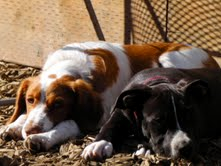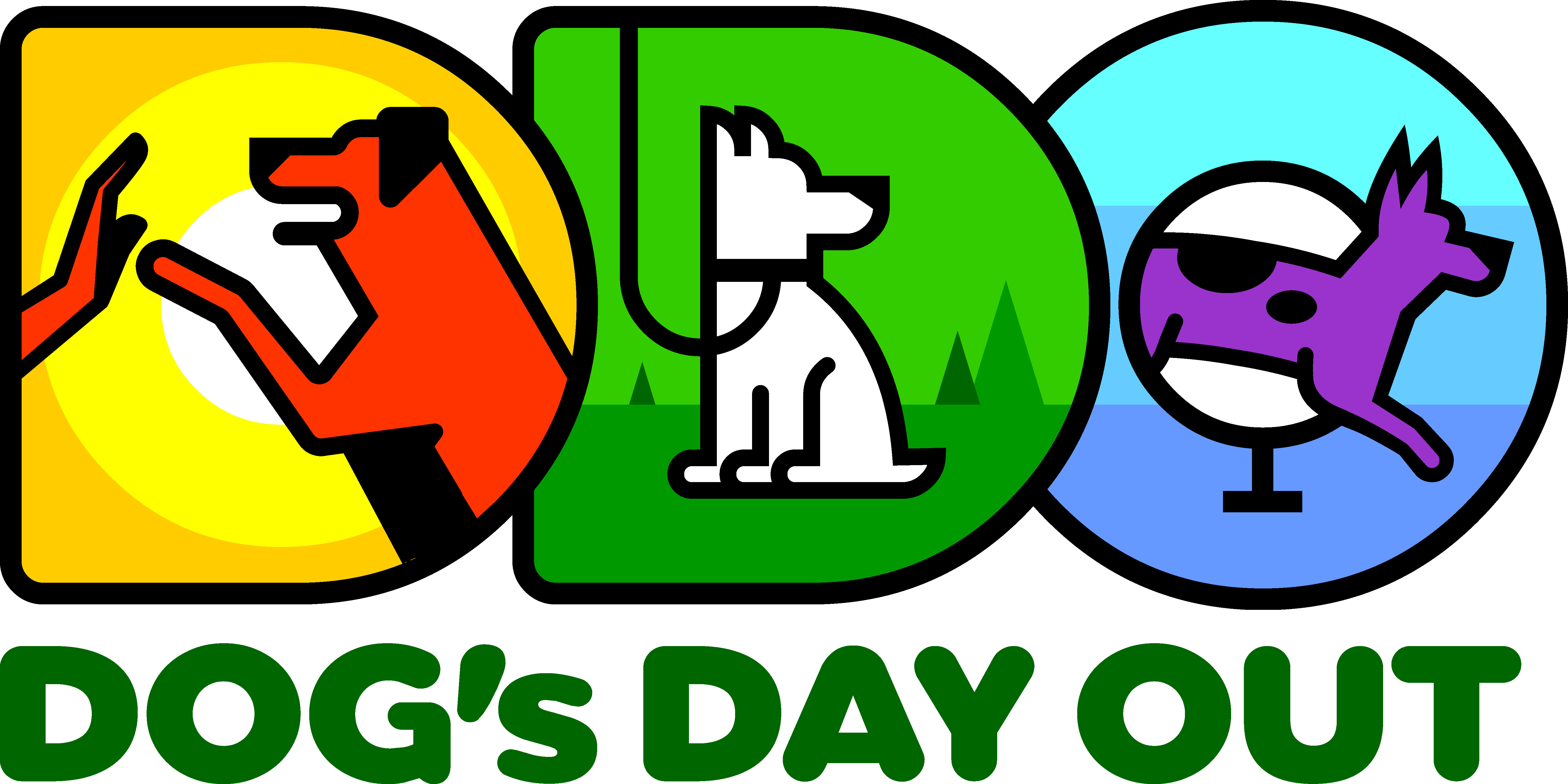I hear the term “socialization” thrown around a lot and it often makes me nervous because it seems as if some people think that “socializing your dog” means taking them everywhere and throwing them into many different situations while not taking the dog’s emotional state at the time into consideration.
Here’s the thing, Socializing does not mean just throwing your dog in to new circumstances and letting him “deal” with it (flooding!). Socialization should mean exposing at a distance where the dog is comfortable and conditioning your dog to many different people, places, dogs, sounds, surfaces….
If you get your dog as a young puppy you have a huge role in socializing your pup. There are certainly circumstances prior to you obtaining your puppy (in the 1st 8 weeks of life) and genetics that will affect your dog’s behavior but if you do have your dog as a puppy you have the opportunity to socialize safely and appropriately. While it is not a good idea to bring your young puppy to a dog park for both medical and behavioral reasons, it IS important to get your dog off of your property (your house and yard) and expose him safely to lots of different stimuli (see list below!) preferable BEFORE THE AGE OF 14 WEEKS.
Also, socialization does not end after one puppy class. A dog has three sensitive periods, or developmental stages where experiences he has may leave a lasting impression or behavior changes may become evident. These periods may vary from dog to dog but generally the first occurs at about 8-14 weeks old, the second at about 7-9 months (the onset of adolescence) and the third at about 1.5-2 years (the onset of maturity). Heavy doses of safe socialization and training are crucial during the first two years of a dog’s life.
The first step to socializing your dog is being able to “read” your dog and know if your dog is comfortable or uncomfortable in a given situation – check this out first to find out. If your dog is already uncomfortable or afraid of some things, take a look at Desensitization and Counter Conditioning in dog training. It is imperative that you proceed at your dog’s pace and where he feels comfortable.
When socializing your dog to new things begin from a distance. Gradually get closer to the stimuli, give your dog a treat (or 2 or 3!) and encourage your dog in a “jolly” voice. Allow your dog to investigate and get closer only if your dog is comfortable and relaxed. If your dog is not comfortable or he is overwhelmed, get more distance and back away until he is relaxed again and do not let the person or dog approach your dog. Your dog sets the pace and gets to initiate the interactions. From this point, start over trying to build the dog’s confidence and gradually get closer to the stimuli. If your dog is not comfortable close up, you can expose your dog to new people and dogs without having him interact. It is OK for him to watch from a distance where he is relaxed. The goal is to get your dog comfortable and confident around new stimuli that he has never encountered or that were previously frightening or uncomfortable to him.
Once your dog is comfortable around new stimuli there are many good ways to socialize your dog but remember to pick the ways that are appropriate for your particular dog.
- Dog parks/Dog Day Care – If your dog enjoys the company of other dogs then dog parks and well-run dog day care facilities can be an option. If you are choosing to go to a dog park make sure your dog has a good grasp of “come” before you ever take him off leash. Make sure the day care does not have too many dogs in one area and is supervised by knowledgeable staff at all times. The day care staff should be fluent in reading canine body language and not use aversive techniques (shouting, shake cans, mention being “alpha” etc.) for control. If your dog does do well and enjoy day care, do not take him 5 days/week! 2-3 days is plenty even for a very active dog. Your dog needs to do a variety of activities to become “well-socialized” and when dogs are in day care everyday the other activities become few and far between. Read more about Dog-Dog Play here.
- Tandem Walks with another Dog. Dog parks and Day Care however, are not good for all dogs. If your dog is, let’s say “choosey” about his dog friends and big groups are not for him, start by taking your dog and the potential new friend for a leashed walk (walking parallel, not straight at each other!) together first and see how they respond to each other. If they can relax while walking next to each other, they may be a good match for off-leash play. Even most dogs who “don’t like other dogs” are able to have 1 or 2 close doggy friends they can play with respectfully.
- Walk your dog in busy neighborhoods so that he can come in contact with other people, dogs and street noises. Always bring delicious treats to help desensitize your dog to these things. While you are there, sit at a coffee shop or outdoor café. Again, making sure your dog is comfortable in this environment. Do not make him sit there if he is in any way nervous or scared.
- Walk your dog past playgrounds/playfields and give him lots of treats for keeping his composure around moving children and balls. If your dog is uncomfortable or reacting (barking, jumping, lunging) on the leash then you need to get more distance until your dog can be calm.
- Enroll in a good, positive basic training class where your dog can practice his impulse control and learn to focus on YOU in a controlled environment.
- Take your dog with you! Dogs like to be with us – the more he gets to hang out with you and go places with you, the happier (and more social) he will be!
Oh, and here is a little checklist for you…
SOCIALIZATION CHECKLIST:
Has your pup met the following? This is only a partial list – I’m sure you can think of more sights and sounds your dog will encounter!
PEOPLE:
Adults
Babies
Toddlers
Children
Teenagers
Seniors
Different ethnicities
PEOPLE WEARING:
Hats
Sunglasses
Umbrellas
Helmets
Beards
Costumes
Different ethnicities
PEOPLE WITH:
Canes
Wheelchair
Walker/crutches
Backpacks
Baby carriers/stroller
Wagons
Shopping carts
PEOPLE IN UNIFORM:
Police
Firefighter
Postal worker
Vet hospital staff
ATHLETIC PEOPLE:
Joggers
Cyclists
Rollerbladers
Skateboarders
MOTOR VEHICLES:
Trucks reversing
Airplanes
Motorcycles
Garbage/Recycling
ANIMALS:
Friendly, healthy adult dogs – big and small
Puppies
Cats
Small pets (rabbits, hamsters, ferrets)
Large Birds (geese, ducks)
Livestock (horses, cows, goats)
OUTDOOR EVENTS:
Parade
Street Fair/Outdoor Market
Live Music
People dancing
Loud Speakers
ENVIRONMENTAL (outside):
Sirens
Thunder/lightning
Rain
Snow
Fireworks
Wind
Construction site
Lawn mower
Leaf blower
Garden hose
ENVIRONMENTAL (home):
Vacuum
Hair dryer
Door bell
Dishwasher
Washer/Dryer
Sweeping/mopping
Guests
Delivery/Repair person
DIFFERENT ENVIRONMENTS:
Car rides
Vet office
Coffee stand
Bank
Gas station
Car wash
Elevators/escalators
Downtown
Pet Supply store
Playground
Friend’s homes
Public transit
Beach
Drive-thru
Hiking trail
DIFFERENT SURFACES:
Stairs
Sand
Grates
Slippery surface
Gravel
Mud
Snow
Go on – get out there (with a giant bag of treats)!

